#ECM Style Jazz
Text

61 notes
·
View notes
Text

Tracklist:
Señor Mouse • Arise, Her Eyes • I'm Your Pal • Desert Air • Crystal Silence • Falling Grace • Feelings And Things • Childrens Song • What Game Shall We Play Today
Spotify ♪ YouTube
#hyltta-polls#polls#language: instrumental#decade: 1970s#Chamber Jazz#Third Stream#ECM Style Jazz#artist: gary burton#artist: chick corea
7 notes
·
View notes
Text
2 notes
·
View notes
Audio
#music discovery#music#spotify link#spotify#music artists#dave holland quartet#song#conference of the birds#genres#avant-garde jazz#contemporary jazz#ecm-style jazz#ecm style jazz#free improvisation#free jazz#jazz quartet#Bourgeoiz Music Discovery#MORE MUSIC ON MY BLOG#from me
2 notes
·
View notes
Text
Ralph Towner - Solstice
USA, 1975, ECM style jazz / jazz fusion / chamber jazz

View On WordPress
0 notes
Text
20. The Necks | Travel

🇦🇺 Australie | Northern Spy | 77 minutes | 4 morceaux
Le trio jazz avant-gardiste australien ajoute une brique supplémentaire à sa riche légende (débutée à la fin des années 80s), échappant toujours aux classifications et aux comparaisons. Puisant son inspiration dans beaucoup de genres différents, sans jamais se conformer à l’un d’entre eux, The Necks est incontestablement la formation la plus fantastique qui soit lorsqu’il s’agit de s’engouffrer dans des improvisations exploratoires mystérieusement évocatrices – usant de la répétition comme d’un véhicule captivant.

youtube
0 notes
Text
youtube
Jonny Nash - All I Ever Needed
From The Album: Point Of Entry (2023)
[Ambient, Ambient Pop, ECM Style Jazz, Post-Rock, New Age]
0 notes
Photo

Dawn Richard & Spencer Zahn - Pigments
(Ambient Pop, Chamber Jazz, Post-Minimalism)
Built on dreamy chamber jazz but colored with everything from ambient pop to post-minimalist electronica, Dawn Richard and Spencer Zahn's new collaborative album is transformative to the fullest extent. Pushing both artists into new territory, Pigments is a daring and enormous statement for them as individuals and as a team.
☆☆☆☆☆
Pigments sounds absolutely nothing like the music Dawn Richard nor Spencer Zahn have released in the past, yet it's such a clear and natural progression for them both. It's this flow of energy and ease of movement Pigments sinks itself into, Richard and Zahn melting into one another across 11 marvelous pieces that never settle down even as they build some of the most beautiful ambient jazz atmospheres in recent years, their respective musical histories blooming in electrifying new ways where it seems like both Richard’s futuristic R&B and Zahn’s pensive modern classical were heading towards the same destination all along. As a result, Pigments feels both deeply innovative and remarkably natural, the duo fully assured in their vision along with the seven other instrumentalists behind Richard and Zahn helping to make their world a reality, each slyly psychedelic arrangements and the duo’s willingness to step back and let the music guide itself keeps the album at a gradual pace while holding an iron grip on your heart the whole way through.
Zahn’s arrangements are the backbone of Pigments and bring out his best work in years, still within the elegant classical realm of his previous releases but stretched out into dreamy electronica and chilly chamber jazz as his and Richard’s cleansing new age world comes to life. With his nine-piece orchestra comprised of clarinet/bass clarinetists Stuart Bogie and Doug Weiselman, guitarists Mike Haldeman and Kirk Schoenherr, cello/viola/violinist Malcom Parson, drummer Dave Scalia, flute/tenor saxophonist Jas Walton, vocalist Dawn Richard, and Zahn himself, Pigments largely eschews darker textures in favor of light and agile compositions that aren’t bogged down with the weight of heavy bass brass or electronics and can take flight whenever he needs them to: Sandstone starts off quiet and mysterious before Richard’s manipulated vocals cast a neon sheen atop Zahn’s electronics and soft woodwind accompaniment, but quickly expands into a soaring rapture of heavenly strings, brisk acoustic guitar and Zahn’s velvety vibraphone arpeggios; Vantablack creates a border of shuffling drums and thick bass clarinet for Richard’s voice to drift in and out of; the gentle bass drum pulse and minimal instrumentation in Umber help bring the album to a soft but utterly gorgeous finish. Richard’s voice isn’t the leading force it tends to be in her solo work - rather, it’s another instrument she and Zahn use to create Pigments’ rich hues, slathering it in reverb or autotune to give it just the right feel for Cerulean’s cavernous romance or Saffron’s glowing hopefulness, the album’s three-movement classical structure and otherworldly sound palette working to benefit Richard’s sumptuous vocals and Zahn’s wildest dreams as a composer. It’s a perfect combination, and not once does the magic fade.
That three movement structure never seems to stop the album from smoothly transitioning from one piece to another, either, instead splitting the album up into three moods you can dig into for specific feelings - these songs aren’t named after colors for no reason, after all. The first movement, starting at opener Coral and closing out with Vantablack, offers up the album’s bolder and more ethereal tones, the former track setting the stage with clear woodwind tones and delicate strings that seamlessly move into Sandstone’s wintry chamber jazz, the spacious interlude Indigo after it a bold but quick delight before Vantablack’s patient vocals and dark, earthy tones bring the first movement to a marvelous finish. In contrast, the second movement is much warmer with a greater emphasis on electronics and ambiance: Cerulean is almost entirely guided by Zahn’s synth programming before swelling into a celestial explosion of improvised saxophone and searing strings - there’s even a guitar solo thrown in for good measure - and the five-minute Sienna forgoes Richard’s vocals entirely, the most fragile Pigments ever gets with its icy synth tones and ever so gentle instrumentation. That’s not even to mention Opal and Saffron, their inclusion of prominent acoustic guitar adding a pastoral touch to Zahn’s expansive dreamspace before a gentle groove and crossroads of saxophone and upright bass dance around one another. The final three tracks, then, strive for a luminosity and elegance in both their titling and sound, Crimson’s angelic lead vocals bolstered by rumbling bass and golden strings, as rich in hue as the color of its title but with the sharp edge of each syllable leaving your lips. Cobalt, though another interlude, is one of the album’s loveliest, the soft yet handsome blue of its color found in each new wave of clarinet and the glistening synths that sit behind them - a perfect way to lead into the album’s spotless finale, Umber. The only track with something close to a solid groove all the way - though it’s little more than a constant kick drum about halfway in - Richard and Zahn cease the moment to embrace meditation rather than a huge, unforgettable finish. Richard’s backing vocals float about like a lingering memory; bass clarinet and synth wrap around one another to fill the lower side of the mix; Zahn’s ambient electronics keep the song heading further and further up into the clouds. It’d be easy to grow into something huge and inhuman, the profound energy of Cerulean dipped in molten lava, but Pigments isn’t that kind of album. It’s slow and willing to linger, and it’s all the better for it.
Like many left-field jazz and electronic albums in recent years, Pigments succeeds not simply because of its transcendent sound and mystical energy, but also in spite of them, staying remarkably grounded and in touch with the human spirit even as Richard and Zahn approach levels of ambient bliss that could only ever materialize on an ice planet hiding a tropical forest under the surface, mercurial in sound yet entirely unified in its search for peace and stability. The combined wonders of their music as individuals merge into one story and one feeling, Pigments as much about their history as artists as it is the shared understanding of the world that drives their music, in constant pursuit of captivation and new energy wherever it may be hiding - it's a blessing these magnificent chamber jazz pieces were where the moment took them. Pigments manages to mesmerize through its sheer commitment to peerless songcraft and atmospheres that are both alien and tactile at once, a delicate world Richard and Zahn imbue with unspeakable beauty and eternal love in every moment.
This review is part of the ALL I MISSED: 2022, where I review all the albums I didn't get to from last year.
#dawn richard#spencer zahn#pigments#merge#ambient#ambient pop#art pop#chamber jazz#ecm style jazz#electronic#experimental#jazz#new age#post-minimalism#2022#10/10#album review#album reviews#new music#all i missed 2022#2022 albums
1 note
·
View note
Text
Listed: Fortunato Durutti Marinetti
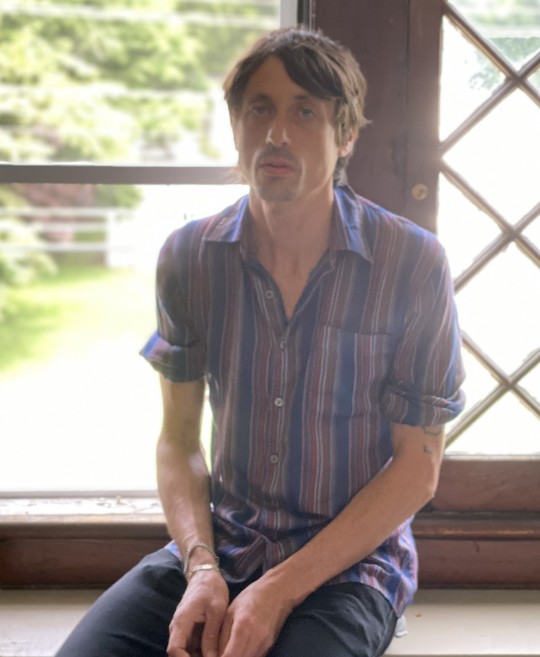
Beginning with 2020’s Desire, a self-released cassette, Toronto-based, Turin-born Daniel Colussi, has explored his “poetic jazz rock” (Colussi’s own apt coinage) across three releases under the moniker Fortunato Durutti Marinetti. The instrumentals flow and waver: now flashes of synthesizer keys or strings; now an inquisitive, lightly warped guitar line — the music floats then jumps but never rushes. His vocals — and lyrics — recall stated 1970s influences like Lou Reed or a spoken-word Robert Wyatt, but also Leonard Cohen or, more contemporarily, Destroyer’s Dan Bejar. Alex Johnson found Colussi’s latest release, Eight Waves In Search Of An Ocean, “engrossing — although not always comfortably…a record that rewards the delayering effect of multiple listens.”
Gary Zhexi Zhang — “The Tourist”
Zhang’s documentary ostensibly tells the story of Ali Sultan Issa, who led Zanzibar’s independence from Britain in 1963. Issa is a totally fascinating and complicated Zelig-like figure who seemed to be present for every revolutionary moment in the middle of the century. He hung out with Castro, Mao and also the CIA. I can’t believe how effectively and delicately Zhang is able to tell what a massive story about empire is — de-colonization, the optimism of mid-twentieth century socialist movements and the brutal 80s neoliberal response. This film also introduced me to the song “Super Snooper”by 1970s Italo disco crew La Bionda.
Annette Peacock — Unsung Heroine
A 12-minute doc on Annette Peacock circa 2000, as she recorded with a string quartet in Oslo for ECM. It’s not the most celebrated era of her career, but An Acrobat’s Heart is an interesting album of smoldering baroque torch songs. There’s great-to-see footage of her walking around Oslo in leather pants and also, it’s great to hear her speaking voice, which has that classic US drawl of an artist who’s lived through decades of chaos.
DJ Voices — Hemlock Nights @ Honcho Campout 2023
When NYC’s DJ Voices came to Toronto last summer my crew and I danced our asses off all night long. It was a good night and I’m glad it happened.
Lou Sheppard with Pamela Hart — Rights Of Passage
A beautiful, smart record that uses the metaphor of a river’s legal right to flow (riparian rights) to talk about property vs. public space, control of and access to resources and forms of enclosure. The record is also about queerness, and how queerness is or is not permitted to exist within particular defined spaces. This record is technically a sister artifact to Lou’s video/sound installation at the Art Gallery of York University, but it works totally well on its own as a gorgeous LP.
Ed Gray — Different Drummer : Elvin Jones
youtube
1979 documentary on Elvin Jones — a weird period for him. I think like most people, I know him primarily through his 1960s albums with John Coltrane. This doc has beautiful footage of Elvin hanging out with his family in the backyard as well as him in the studio describing his relationship to the cymbals in terms of different colors — chromesthesia. I also like his sleazy late 70s style — white leather loafers, a mesh shirt and a cigarette dangling as he absolutely shreds on his kit.
Elvis Presley — Unchained Melody (Rapid City June 21, 1977)
youtube
An insane document of Elvis in the very final throes of his imperial era. His banter is barely intelligible. Coca Cola cups scattered everywhere. Everyone in the band is sweaty and hairy. Wide bellbottoms all around. A middle-aged stagehand (who Elvis refers to as “son”) awkwardly holds the mic up to Elvis. Rising out of all this confusion, Elvis begins an extremely personal rendition of this Righteous Brothers song. There are pregnant pauses, as if he loses his place in the song, and there is no consistent tempo until the band kicks in, at which point all of Rapid City levitates into outer space. And two months later, Elvis was dead.
The Invisible Committee — The Coming Insurrection
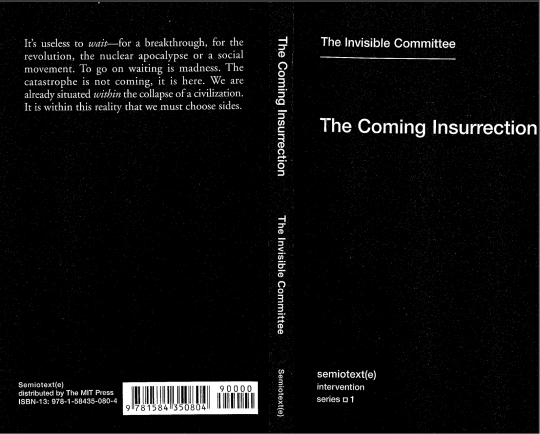
In his Dusted review of my album, Alex Johnson singled out the words and language in my song “Smash Your Head Against The Wall.” When I think back to writing that song, I think of reading The Invisible Committee’s The Coming Insurrection. Their language is totally polemic and fiery and outrageous, but purposely and with intent. Oftentimes they’re playing with that caricatured idea of “the radical left.” Not everyone appreciates this approach: apparently it freaked out US neocon broadcaster Glenn Beck enough that he warned his followers about this book’s evil. My copy has many underlined passages that I return to again and again for guidance and inspiration.
Bruford — Back To The Beginning (Rock Goes To College, March 17th, 1979)
youtube
Annette Peacock’s second appearance on this list — too much? In this performance she casually strolls into the Bruford zone to provide some female levity to this otherwise brutally nervous and sweaty prog rock crew. There’s a strong argument that this song sucks because it suffers from that thing of prog/jazz virtuosos trying to play basic heavy rock and failing because they’re too good. But I think it’s awesome, especially when Annette lets her raincoat theatrically drop to the floor to indicate that she has officially assumed control of the proceedings.
Joni Mitchell — In France They Kiss On Main Street (Santa Barbara Bowl, 1979)
youtube
I like this era because it captures Joni just as she’s really alienating the majority of her audience by desecrating her folk-rock legacy via fully embracing smoothed out jazz fusion tones. She’s playing with a squad of absolute rippers: Metheny, Pastorius, Lyle Mays, Michael Brecker and Don Alias. Everyone is at the top of their game; everyone is in the zone. I like this ferocious live version of this song better than the studio version.
Tindersticks — The Ballad of Tindersticks (2 Meter Sessions, June 7, 1997)
youtube
For me Tindersticks are a deep well of inspiration, to which I can continually return for sustenance, guidance and nourishing refreshment. I love it all: the early baroque albums, the mid period soul albums, the soundtracks, the solo records. I think their last record was phenomenal. They are masters of subtly adjusting their songwriting as a way of unlocking vast new territories to explore. They make it all their own. I pick this particular clip because I like how the entire band is sweating profusely.
#dusted magazine#listed#daniel colussi#fortunato durutti marinetti#gary zhexi zhang#annette peacock#dj voices#lou sheppard#pamela hart#ed gray#elvin jones#elvis presley#the invisible committee#bruford#joni mitchell#tindersticks
2 notes
·
View notes
Photo
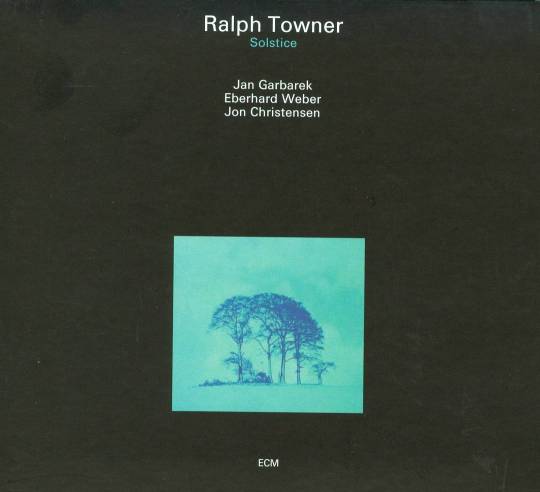
AllMusic Staff Pick:
Ralph Towner
Solstice
When Oregon’s Ralph Towner released Solstice, his third solo album on the ECM label, it took the brilliant guitarist's caché to a much higher level, especially as a composer. With the otherworldly curved soprano sax and flute playing of Jan Garbarek, the precise drumming of Jon Christensen, and unique bass sounds of Eberhard Weber, the music on this album lifted the ECM/Euro-styled jazz and improvised music to a new realm of pure expressionism. Simply put -- this music is stunningly beautiful.
- Michael G. Nastos
9 notes
·
View notes
Photo



Seine Trance-Parenz Fredi Alberti
Klaenge Aus Dem Engelsraum
(Die Verdunklung Der Sonne Und Des Mondes)
Series: Seins-Musik, Artfusion – No. 4
Format: Vinyl, 12", 33 ⅓ RPM, 45 RPM, Mini-Album
Country: Germany
Released: 1981
Genre: Jazz, Folk, World, & Country
Style: Experimental, Drone, Tribal, Ethereal
Track B1
Deadstock copies of this transcendentally ancient sounding art/folk/fusion LP from ex Pân-Râ man Fredi Alberti.
Throughout the long 60s musicians who saw themselves as both anthropologist and shaman spread out from university towns across Europe and the Americas. They hunted through the junk shops of the world searching for ocarinas, samisens, psalteries and tablas. And returned to make LPs on Wergo, ECM, and Harmonia Mundi. Think Stephen Micus, The Incredible String Band, Gregorio Paniagua, Peter Giger, Bengt Berger, Embryo etc. etc. Sometimes this approach created the worst kind of musical cultural appropriation with too many notes. But sometimes one of these unlikely mixtures of unfamiliar instruments, recondite modalities and post-psychedelic freedom created weird, fierce and transformative music. Fredi Alberti’s work fits perfectly into this category. Pân-Râ, his previous band made raw rhythmic slightly scary records that they described as ‘Music From Atlantis’. This album made in 1981 after a trip to Japan continues in this vein. It's a rich and unsettling improvised mixture of ancient pan-Mediterranean musics with African, Arabic and Indian influences, played on ukulele, cello, harmonium and hand drums. The untitled first track, with its whirling harmonium, strung out vocals and stepping clay drum, is totally transporting - like recovering the memory of painting on a cave wall 35,000 years ago.
Also, with a stunning gimmick sleeve by artist hjKropp
3 notes
·
View notes
Text

30 notes
·
View notes
Text
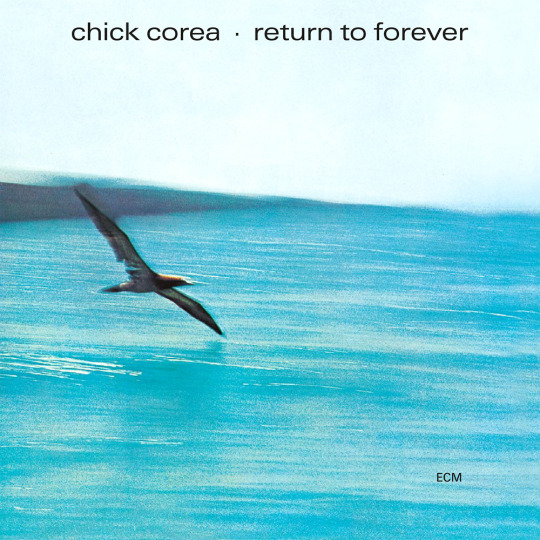
Tracklist:
Return To Forever • Crystal Silence • What Game Shall We Play Today • Sometime Ago - La Fiesta
Spotify ♪ YouTube
#hyltta-polls#polls#artist: chick corea#language: instrumental#language: english#decade: 1970s#Jazz Fusion#Latin Jazz#ECM Style Jazz
7 notes
·
View notes
Text
Danny Kuttner - Come Play with Me

Finding its way at the midpoint between soulful slick and left-field electronica, Amsterdam-born but Israeli-raised artist Danny Kuttner introduces listeners to single "Come Play with Me". Inspired by the contemporary jazz style distributed under record label ECM, the tropical climes of Kuttner's single samples warm yet otherworldly Balearic sounds. Coaxing through its beachy calm, Danny's vocals resonate through generous reverb and a gently-hued synth pads that placate emotions in its subduing tranquility. Speaking about the track and the inspiration behind the lyrics, Danny had this to say:
“The lyrics are about the desire to live curiously and a constant reminder to play, which was the creative process I used to approach its songwriting. I recorded artists in a playful and organic way, with no pre devised plan, in different settings; the drums were recorded in a professional studio, the flute was recorded in a friend’s wardrobe. Some of the recordings were spontaneous and some Pre-calculated, which made it all fun and unexpected”.
With a video to accompany the song’s dreamy mood and fit its idyllic motifs, Danny adds:
“The video expresses a wild calling by humans for freedom and creativity. The experience was magical and intense. We allowed the forest to be the centre of the story.”
You can check out the track and video below:
youtube
Danny Kuttner · Come Play With Me
2 notes
·
View notes
Audio
Clear Path Ensemble - Solar Eclipse
As pockets of new jazz scenes emerge around the world, it’s apparent that New Zealand’s bubbling microcosm in Wellington interprets the genre through a unique lens.
Clear Path Ensemble bottles the energy of that burgeoning movement and distils it into moody morsels of differing styles. From electric jazz to ambient, experimental, house and funk – it’s a DIY, jam-session attitude towards composition, as the band members freely cherry-pick from a vast orchard of influences.
Citing inspiration from 70s ECM catalogue, the ensemble channels the “expansive and astral” elements of electric jazz, with an introspective dynamic. At times it’s fused with catchy synth hooks, smooth basslines and shuffling beats, while other tracks morph into moody electronic soundscapes, and even Sun Ra-esque free jazz.
Led by percussionist Cory Champion, the band released their debut self-titled album with HHV in 2020, followed by a headline performance at the 2021 Wellington Jazz Festival. Champion has played drums alongside some of New Zealand’s most revered contemporary musicians (Lord Echo, Lucien Johnson and Mara TK to name a few), and also produces leftfield deep house and techno under the name Borrowed cs, which partly informs the ensemble’s electronic production.
Says Champion: “for a long time I had ambitions to make this project but always planned on it being recorded traditionally. Ultimately, I was encouraged by a new DIY spirit in contemporary jazz, where electronic music production techniques are fully integrated in the recording and production of great new contemporary jazz music.”
4 notes
·
View notes
Text
Mikhail Alperin & Arkady Shilkloper – Wave of Sorrow
Mikhail Alperin & Arkady Shilkloper – Wave of Sorrow
Ukraine / Russia, 1990, ECM style jazz / chamber jazz
There’s really nothing sorrowful about this album. It’s actually quite fun, light, and charming, with just the lightest touches of Slavic folk thrown in… and an unexpected run of sudden scat singing. This is very ECM, though: not very challenging but supremely pleasant. They make a lot out of a single piano and a few horns, blowing through…
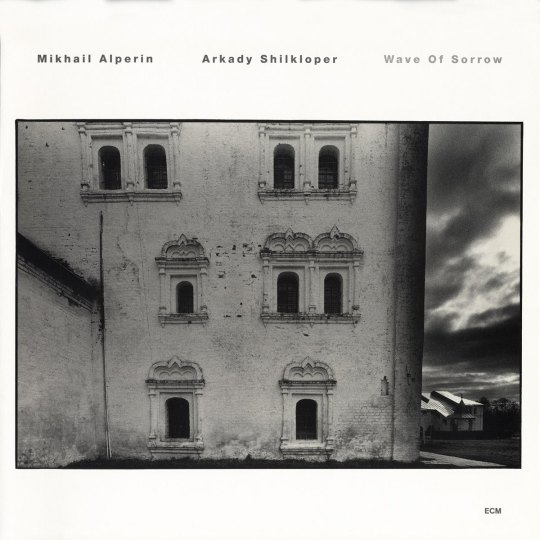
View On WordPress
0 notes